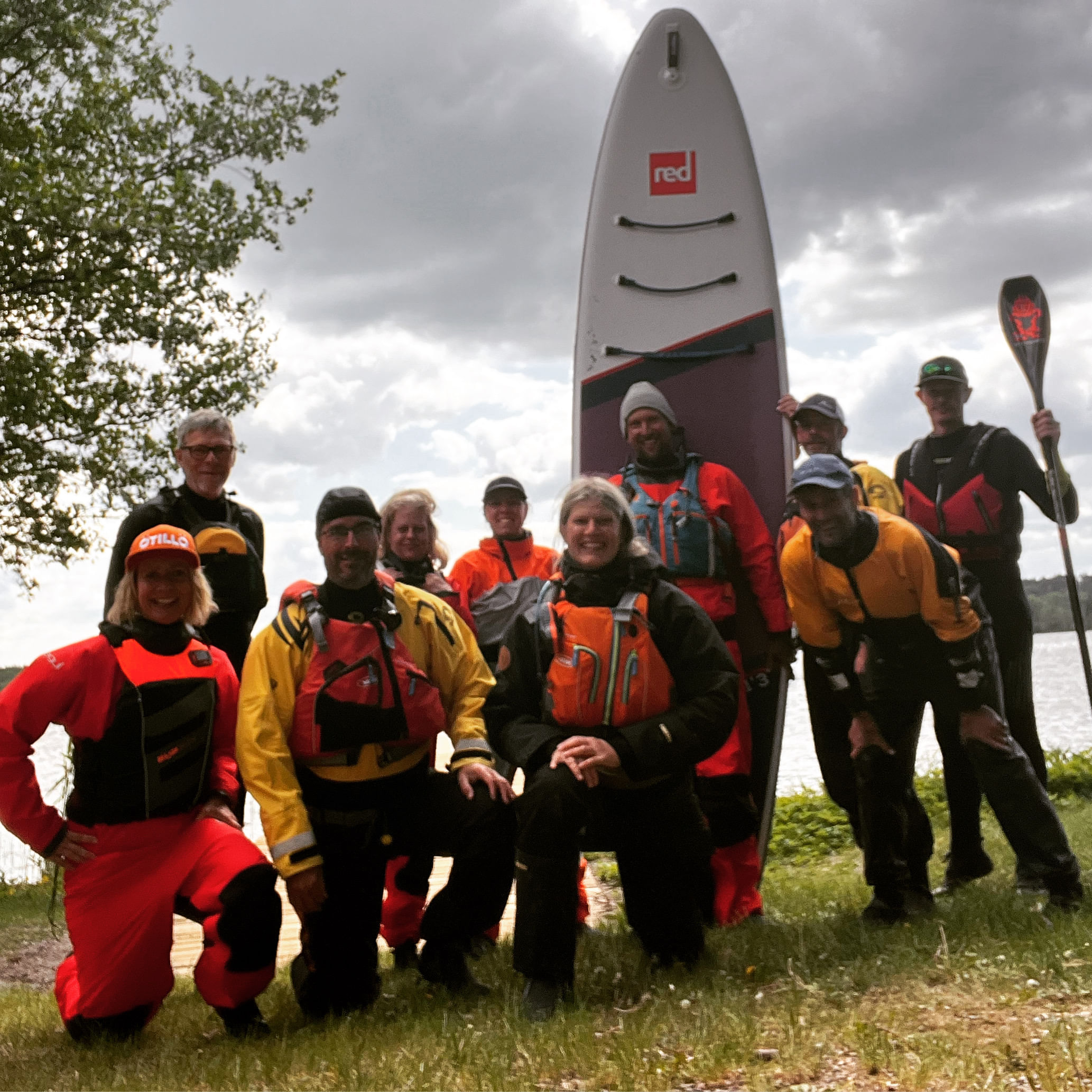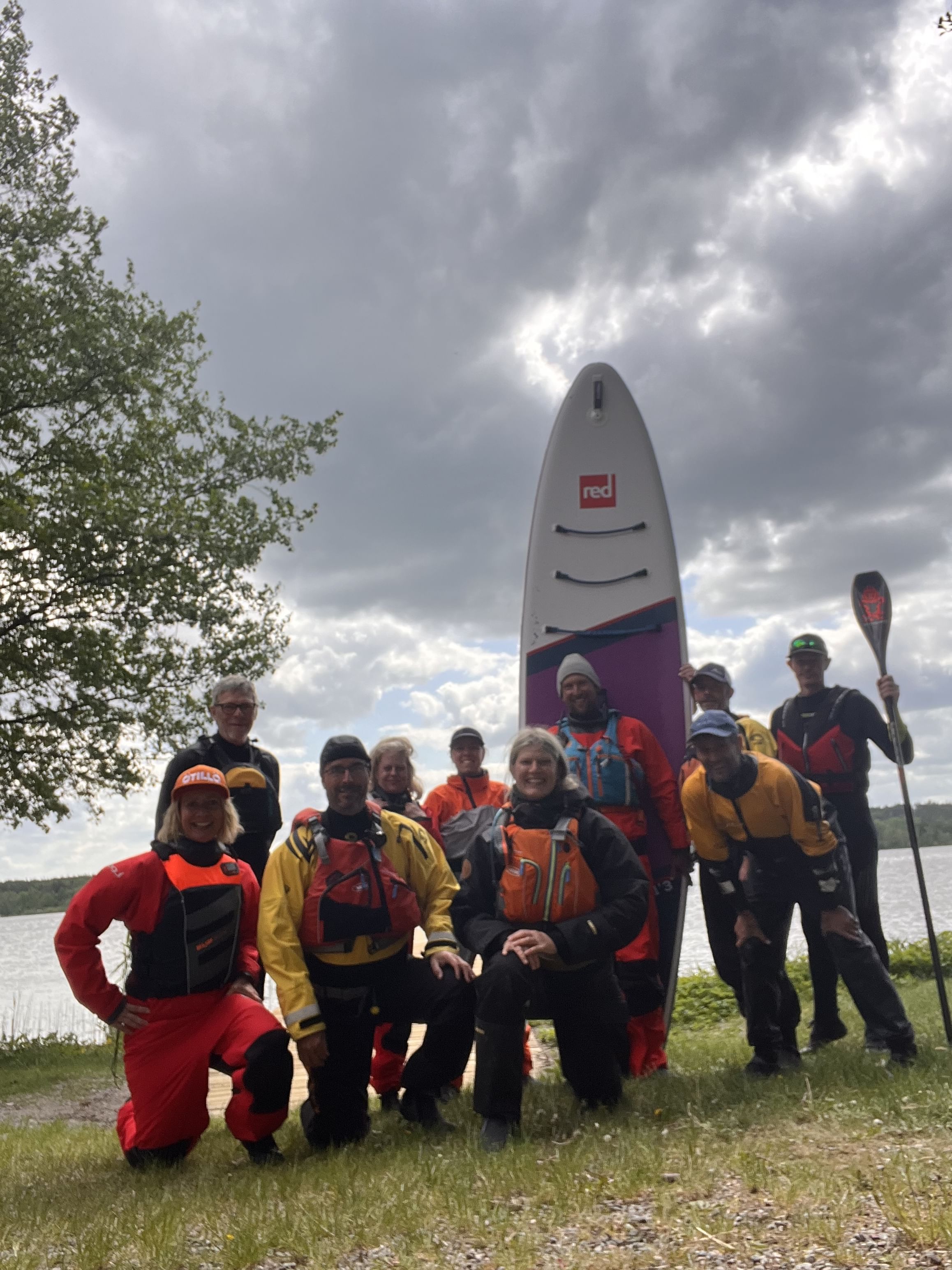SUP certificate - EPP 1
SUP certificate - EPP 1
2 hours and 30 minutes
Moderate
Objectives and frameworks for yellow examination Yellow level aims to start the SUP paddler's interest and development of good basic knowledge. By learning the basic skills and awakening the desire to want to learn more.
Technical standard
Lift, carry and put in
The paddler must learn to lift and carry his board to the water in a safe manner. It is recommended to carry with the fins first for best control with regard to the surroundings.
Balance
The paddler gets to try and experiment with the balance on the board, kneeling and standing.
Forward paddling
To get a foundation in forward paddling, the paddler must learn:
- Paddling with hands
- The paddler can move the board without a paddle using his hands lying on his stomach and sitting on his knees.
- Paddling kneeling
- With paddle
- Try different trims by kneeling near the bow, in the stern and in the middle
- Stand up paddling
- Try different foot positions (Basic, Surf, T-toe)
- Slightly bent knees
- Try several different positions and even move around to change trim and discover how it affects the board and paddling.
- The entire paddle blade below the water surface during the drive phase
- The basics of power transmission
- How paddling is a full-body movement where large muscle groups are used
- Discover the difference between using large muscle groups and pushing and pulling with your arms.
- Active leg work
- Insert the blade forward downwards (in what is called positive insertion)
- Paddle with a vertical shaft
- Gain an understanding of the Bent-shaft paddle function.
- Maintain direction and speed
- Keep a directionally stable course for at least 50 meters (for example by changing the side of the paddle)
- Try paddling at different speeds
Stop
- The paddler learns to stop his board completely from normal forward speed.
- Rotate 180 degrees in place
- The paddler learns to turn using forward sweeps or extended sweeps (cross stroke + forward sweep). Use your feet to propel the board around. The turn is practiced both clockwise and counterclockwise.
Turn under speed
The paddler learns to swing his board in both directions during forward motion using sweep strokes and extended sweep strokes (cross stroke + sweep). Suggested by paddling in an 8.
Back paddling
The paddler learns to paddle backwards and practice moving the board one board length backwards without turning himself over on the board. The canoeist can also try turning to paddle backwards and reflect on the advantages of the different methods.
Support
The paddler must demonstrate an understanding of using the paddle in the water as support and begin to get a feel for how it works. It can be, for example, through a normal paddle stroke or trying pivot turns.
Security
Learning the basics of safe paddling is both about gaining an understanding of safe behavior and dangers that may exist. The moments have both practical and theoretical parts.
Personal safety equipment
The paddler must wear a life jacket as well as appropriate equipment and clothing for the prevailing conditions. The paddler must know the importance of being able to call for help when needed. Ex. to carry a mobile phone in a waterproof case.
Leash
The paddler is recommended to use a leash and is taught the pros and cons of it and knows what conditions we want to use it in and when it poses risks. There are different types of leashes, and it is important that the type of leash is chosen according to the environment and possible risks. You can read more information, for example, on British Canoeing's page about leashes for SUP.
Water habit
The paddler must be given the opportunity to practice his safety when he ends up in the water.
Self-rescue
The paddler gets to practice turning his board and getting back up after tripping in deep water.
the 3–1 rule
To avoid injuring ourselves in the event of a fall, we want to be 3 meters from the loading point and have at least 1 meter of water before standing up.
Paddle with friends
Being at least two can be life-changing in the event of tipping, weather changes, damage, etc.
Awareness of hazards
As a new paddler, it is valuable to reflect on the dangers that can exist with paddling. It is important to know your own capacity and stay within its limits.
The risks can be related to low water temperature and the difficulties in calling for help in the event of incidents. One danger to be aware of is encounters with boats and jet skis. Paddlers cannot be seen very well, especially not in big waves, low sun and in the back light of boat drivers. Avoid paddling in waterways and make safe route choices in vulnerable places. Expect not to be seen and act accordingly.
Waves and wind can quickly create an undesirable situation with difficulty moving forward, maneuvering and keeping your balance. See the weather forecast with wind direction and wind strength before paddling in open water. Keep an eye on wave and wind conditions, as well as thunderstorms. Turn and seek cover in time.
Environmental considerations
We are guests in nature. Show consideration, behave without disturbing and destroying. The goal is for all paddlers to feel that it is a matter of course. Follow the Allemansrätten, environmental legislation and any local rules and regulations. In the public right, see without disturbing, leave no trace, protected areas at certain times and restrictions on burning are emphasized.
Learn and respect access agreements
Avoid conflict with landowners and other stakeholders in the area. Many canoe clubs and canoe rental companies are located in scenic areas and adjacent to bird protection areas with access restrictions at certain times.
Respecting domestic peace and the right to have one's plot in peace always applies. It is true that you can use a jetty that is not on a plot of land if you do not obstruct the owner, but it is important to be humble and sensitive in that situation.
When training and competing, follow the principles of Fair Play
It is a point that does not require extensive explanation, but deserves attention.
What's included?
- Paddelboard with leash
- Paddel
- PFD / Lifejacket
- Neoprene wetsuit
- Neoprene shoes
Exclusions
Please note
What to bring
- Long Johns, tights or swimsuit to wear underneath the wet suit that you can borrow.
- Sunprotection


